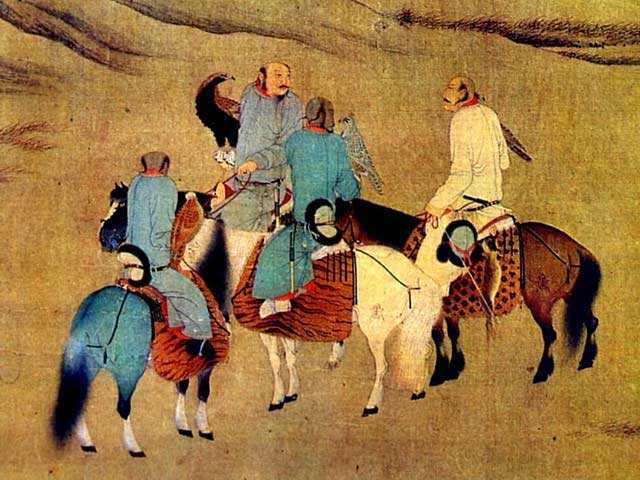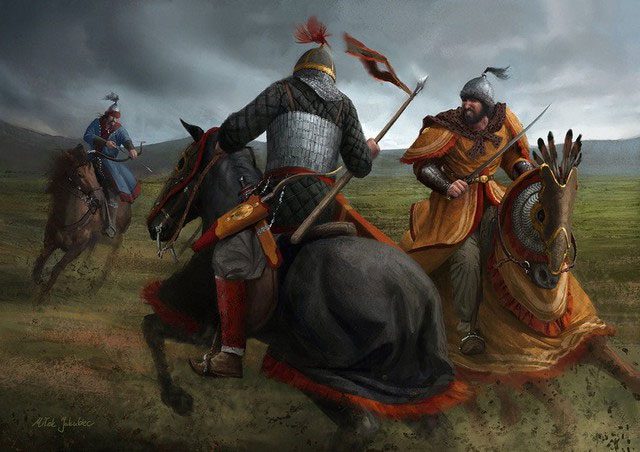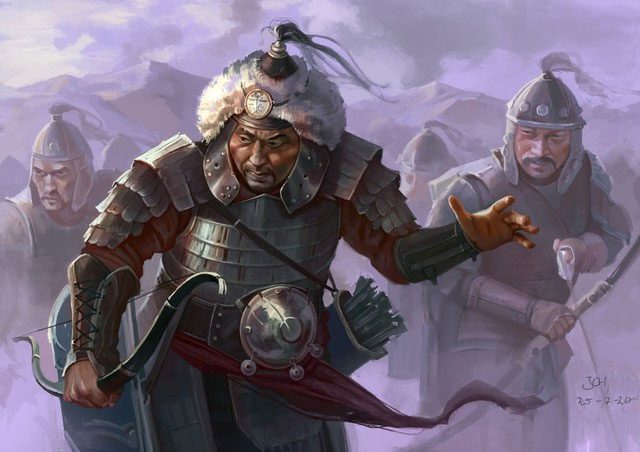The Khitan Nomadic Tribe, which once existed in Central and Northern Asia. Historical records indicate that this tribe established the Liao Dynasty and even created their own writing system. However, for some mysterious reason, today we seem unable to find any clear trace of them.
In northern China, there is a vast grassland where a people deeply connected to this land once thrived: the Khitan.
The Khitan were a mysterious people, once prosperous, populous, and culturally vibrant. Yet, over 900 years ago, all traces of them seemed to vanish suddenly, as if swept away by the sands of time.
Scholars across generations have attempted to uncover clues to explain the mysterious disappearance of the Khitan, but the results have not met expectations, resembling an enormous enigma that remains unsolved.

Over 900 years ago, all traces of the Khitan seemed to suddenly disappear. (Illustrative image).
Anyone who studies ancient Chinese history knows that during the dynastic changes, when the Liao and Song dynasties clashed, the Song-Liao war erupted violently. This historical period occurred during the reign of Emperor Taizong of Song, Zhao Guangyi, from the late 10th century to the early 11th century after the establishment of the Northern Song Dynasty. At that time, the power of the Liao was expanding, and border conflicts became more frequent.
Consequently, the Song emperor decided to send envoys to negotiate peace. This was a difficult decision, as seeking peace with the Liao meant acknowledging their own weaknesses, but under those circumstances, it seemed the only option. The emperor understood that continuing to fight would only bring greater losses and would not guarantee a final victory.
The journey of the envoys to the Liao was fraught with difficulties, but they ultimately succeeded in reaching a peace agreement with the Liao. The Song had to cede part of their territory and pay reparations in exchange for relative peace at the border.

This mighty empire fell due to an unexpected event. (Illustrative image).
This fully demonstrates that the Liao in the Liaodong region of northern China was one of the most powerful states from the mid-11th to early 12th centuries. This glory and splendor have been recorded in countless historical texts, some of which have attracted attention from other parts of the world.
At this time, Yanjing, the capital of the Liao, was one of the most prosperous cities in the world. The magnificent palaces within the city and the vast mountains outside were the pride of the Liao rulers. However, this mighty empire fell due to an unexpected event.
All of this stemmed from the debauchery and indulgence of Emperor Tianzuo (the ninth and last emperor of the Liao). This emperor had a particular fondness for wine, beautiful women, and hunting, especially for a bird of prey known as the Haidongqing (Peregrine Falcon). However, this bird lived in the area inhabited by the Jurchens, beyond the control of the Liao.
Thus, Emperor Tianzuo sent envoys to the Jurchens to bring back the Haidongqing, but their greed did not stop there. The envoys abducted Jurchen girls to satisfy their selfish desires. Although unable to take action against this behavior, the leaders of the Jurchen tribe harbored deep resentment.

With the collapse of the Liao, the Khitan seemed to vanish from history. (Illustrative image).
Subsequently, the rise of the Jin Dynasty established by the Jurchen tribe became their hope. Emperor Wanyan Aguda of the Jin formed an alliance with the Song and together launched an attack on the Liao.
This war took place in the early 12th century, specifically from around 1115 AD to 1125 AD.
At that time, Emperor Tianzuo was still engrossed in his pleasures, ignoring the threat of the Jin. After many battles, the Liao fell into chaos, and the fate of the Liao was rewritten. The Jin army captured Yanjing, and Emperor Tianzuo of the Liao was also captured. The fall of the Liao marked the end of the empire that once dominated the Northeast.
With the collapse of the Liao, the Khitan seemed to disappear from the timeline of history. Their descendants left no traces, not even books or texts of the Khitan can be found.
In 1922, a Belgian missionary named Kervan arrived in Batingue, Inner Mongolia (China) to preach. He was taken by his followers to see an ancient tomb that had been robbed, and this tomb robbery piqued his curiosity. As he approached the ancient tomb, carefully observing the signs of theft, he unexpectedly discovered a forgotten stone tablet.
“The writing on this stone tablet appears to be ancient Khitan script,” Kervan murmured to himself, and then carefully copied the inscriptions on the stone tablet.
He hoped to seek help from experts to decipher it, but even the best codebreakers of that time were puzzled and unable to decode its meaning.
As experts continued searching for answers, a mysterious letter changed everything. The letter suggested that the Daur people might be descendants of the ancient Khitan, a claim that greatly intrigued the experts.
They hurried to the Daur region (Northeast China) and opened an investigation into the Daur people. Upon interacting with the locals, they were surprised to find that the Daur lifestyle closely resembled that of the ancient Khitan.

DNA test results show that the Daur are descendants of the Khitan. (Illustrative image).
To test this theory, experts conducted DNA tests. They collected DNA samples from Khitan women excavated in Inner Mongolia, as well as samples from some Daur youths and compared them. The results showed that the DNA of the Daur is very similar to that of the Khitan, confirming that the Daur are likely descendants of the Khitan.
Coincidentally, some internet users discovered a mysterious phenomenon in Yeshi village in Xi’an. Almost all the residents of this village share the surname Ye, and their appearance is entirely different from that of the local people.
After research by historians, they discovered that the residents of Yeshi village are indeed also descendants of the Khitan. Yelu, the surname of the Khitan, represented the family that led the Khitan tribal alliance.
Under the oppression of the Jin, the Khitan suffered heavy losses, their homes were destroyed, their culture was trampled, and their language was banned. Faced with oppression and harsh discrimination, many Khitan chose to hide their identities and began lives in exile.
Some fled north to the grasslands at the border, while others escaped south into the deep mountains and dense forests, where they established hideouts and quietly safeguarded their secrets.


















































